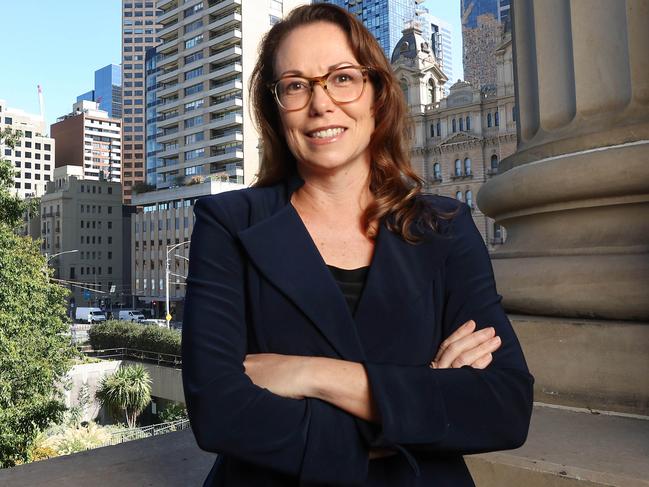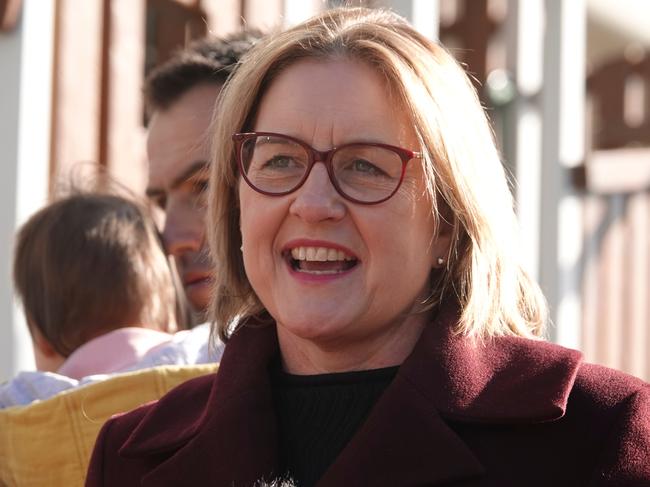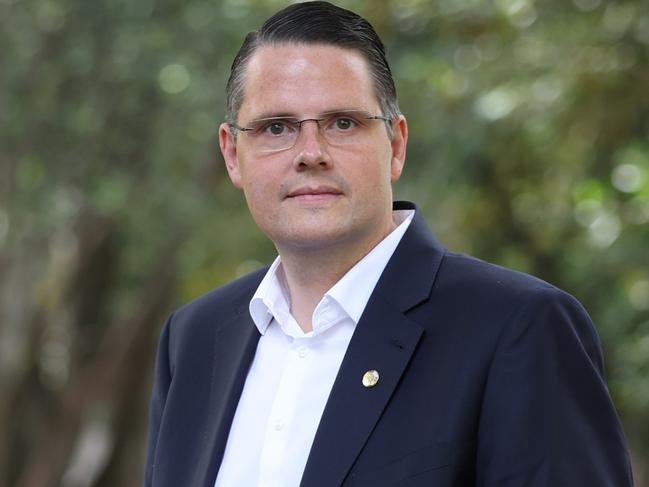State budget 2025-26: $31bn for health to be centrepiece of Victorian budget
A $31bn health package will be the centrepiece of Tuesday’s state budget. Here’s everything we know about what’s in it.
Victoria
Don't miss out on the headlines from Victoria. Followed categories will be added to My News.
Jacinta Allan is poised to spruik a back-to-basics budget, with a record $31bn investment in the Victorian health system.
The massive investment will inject an additional $1.6bn into the system over the next four years and is expected to be the centrepiece of today’s budget.
It will include a $9.3bn boost for existing hospitals and $634m to open nine new or expanded hospitals.
Despite the big spend, the Allan government’s second budget is set to include a first operating surplus since the pandemic – albeit only projected to be $600m, down $1bn on previous forecasts.
Net debt will continue to rise, but not reach $200bn, while Treasurer Jaclyn Symes has promised no new or increased taxes beyond the controversial fire services levy.
“The message I heard loud and clear from the business sector, industry sector was no more taxes,” she said.
“There is nothing in the budget that changes the tax settings.”

Billions of dollars of spending has already been unveiled, including $727m for the Metro Tunnel, $976m for regional roads and $318m for a free-for-kids public transport scheme.
A further $727m will go to expanding the prison network.
But the record health investment is expected to be the Premier’s big-ticket item as she crafts a narrative around strong investment in core Labor areas of health and education.
“The message will be this is a responsible budget,” one senior government source said.
It will include $634.3m to open and operationalise nine new or expanded hospitals, including Footscray Hospital, Frankston Hospital, and Maryborough and District Hospital.
More than $40m will also go to expanding the network of Urgent Care Clinics and Community Pharmacy programs.
“I will always fight for a strong public health system,” Ms Allan said.
“That’s why I’m focused on investing in our world-class health system and backing our doctors, nurses, midwives, paramedics and all other frontline health workers – so Victorians can get the care they need, when and where they need it.”
Spending on major infrastructure projects, while expected to fall from record levels in previous years, will remain a significant part of the budget.
The government is ploughing ahead with the $34.5bn first stage of the Suburban Rail Loop and has committed $4bn to works at Sunshine Station.

Credit ratings agencies have put the government squarely on notice that without seeing a commitment to fiscal restraint, Victoria would face a certain damaging downgrade.
They have repeatedly raised concerns about Victoria’s massive infrastructure pipeline and warned that without scaling it back its current AA rating — a national low — was in jeopardy.
That would significantly impact the state’s ability to pay down its record debt level, which is on track to hit $187.3bn by 2027-28 but will soar higher still in today’s budget.
Ms Symes said she was confident of prioritising cost-of-living measures and frontline services over bigger savings.
“We could have elected to have a larger surplus...what we did is choose to back Victorians,” she said.
“We know that cost-of-living and frontline services … are the priorities that Victorians expect a Labor government to get behind so we are investing in health, mental health, education, transport — all the things that Victorians want.
“We’re also offering practical cost-of-living measures as well as delivering a surplus.
“We have been responsible, we’ve made tough decisions but we’ve made the right decisions.”
In pursuit of savings Ms Symes has promised to axe thousands of public sector jobs, while dozens of inefficient and nonpriority programs are believed to be under threat.

Budget to post surplus but $1b has vanished
The 2025-26 budget is expected to post a surplus, but one that is $1bn less than what the government was forecasting in December.
As reported in the Herald Sun on Monday, Victoria’s first surplus since before the pandemic will be $900m less than what the Allan government forecast just a year ago as Ms Symes fights to claw back the state’s monstrous debt.
Ms Symes will unveil an operating surplus of $600m for 2025-26.
In his final budget last year, Tim Pallas said Victoria was on track to return to an operating surplus of $1.5bn by 2025-26.
And as recently as December, the government predicted it would increase to $1.6bn.
Ms Symes said the $900m shortfall was a deliberate decision that she had taken to provide cost-of-living relief to cash strapped Victorians.
“We could have elected to have a larger surplus in tomorrow’s budget but what we did is choose to back Victorians,” she said.
“We know that cost-of-living and frontline services … are the priorities that Victorians expect a Labor government to get behind so we are investing in health, mental health, education, transport — all the things that Victorians want.
“We’re also offering practical cost-of-living measures as well as delivering a surplus.
“We have been responsible, we’ve made tough decisions but we’ve made the right decisions.”
Tuesday’s state budget will also confirm that net debt as a share of the economy will peak in 2026-27 before it is expected to fall over the following years.
Official forecasts show Victoria’s debt is on track to hit an eye-watering $188bn by 2028, but blowouts on major projects and the government’s wages bill are expected to significantly impact that figure.
The government has been frantically working to avoid a debt blowout that sources warned could see net debt exceed $200bn for the first time in the state’s history.
On Monday Ms Symes was tight-lipped on what the updated debt figures are, but said it would not break the $200bn mark.
“The aggregates will be revealed tomorrow — they will not start with a two,” she said.
Shadow Treasurer James Newbury said every Victorian should be scared by the state’s debt position.
“Families and businesses are being squeezed harder every year, while Labor continues to blow the budget with no accountability,” he said.

While this year’s surplus is lower than what had initially been forecast, Ms Symes said the predicted operating surpluses of $1.9bn in 2026-27 and $2.4bn in 2027-28 were an improvement from the 2024-25 budget update.
In that update, the government had anticipated a return to an operating surplus in 2025-26 of $1.6bn, increasing to $1.7bn in 2026-27 and then $2bn by 2027-28.
Returning to an operating surplus is the third step of the government’s five-step fiscal strategy, which was established in response to the massive levels of spending undertaken during the Covid pandemic.
The next step of the plan is to stabilise net debt levels as a proportion of gross state product.
“From here, net debt will continue to fall as a share of the economy, and we will see continued surpluses in the years to come – allowing us to continue to provide services and infrastructure that Victorians need,” Ms Symes said.
Premier Jacinta Allan – who on Sunday unveiled that public transport would become free for every child across the state – said Victorians had demanded a “responsible budget”.
The $318m policy which is the government’s key cost-of-living sweetener is expected to save families up to $755 a year per child.
“Victorians want a responsible budget that sets up our state for the future, and they want real help to ease the cost of living right now,” Ms Allan said.
The Herald Sun can also reveal the budget will include a $9.3m boost to provide free training to TAFE teachers.
WHAT WE KNOW SO FAR
• $600m operating surplus
• $727m to operationalise the Metro Tunnel
• $98.7m to boost train frequency across metro and regional lines
• $4bn for Sunshine station works
• $61m in stamp duty tax cuts
• $722m to expand prison capacity
• $976m injection for regional roads
• $318m for free public transport for youths



